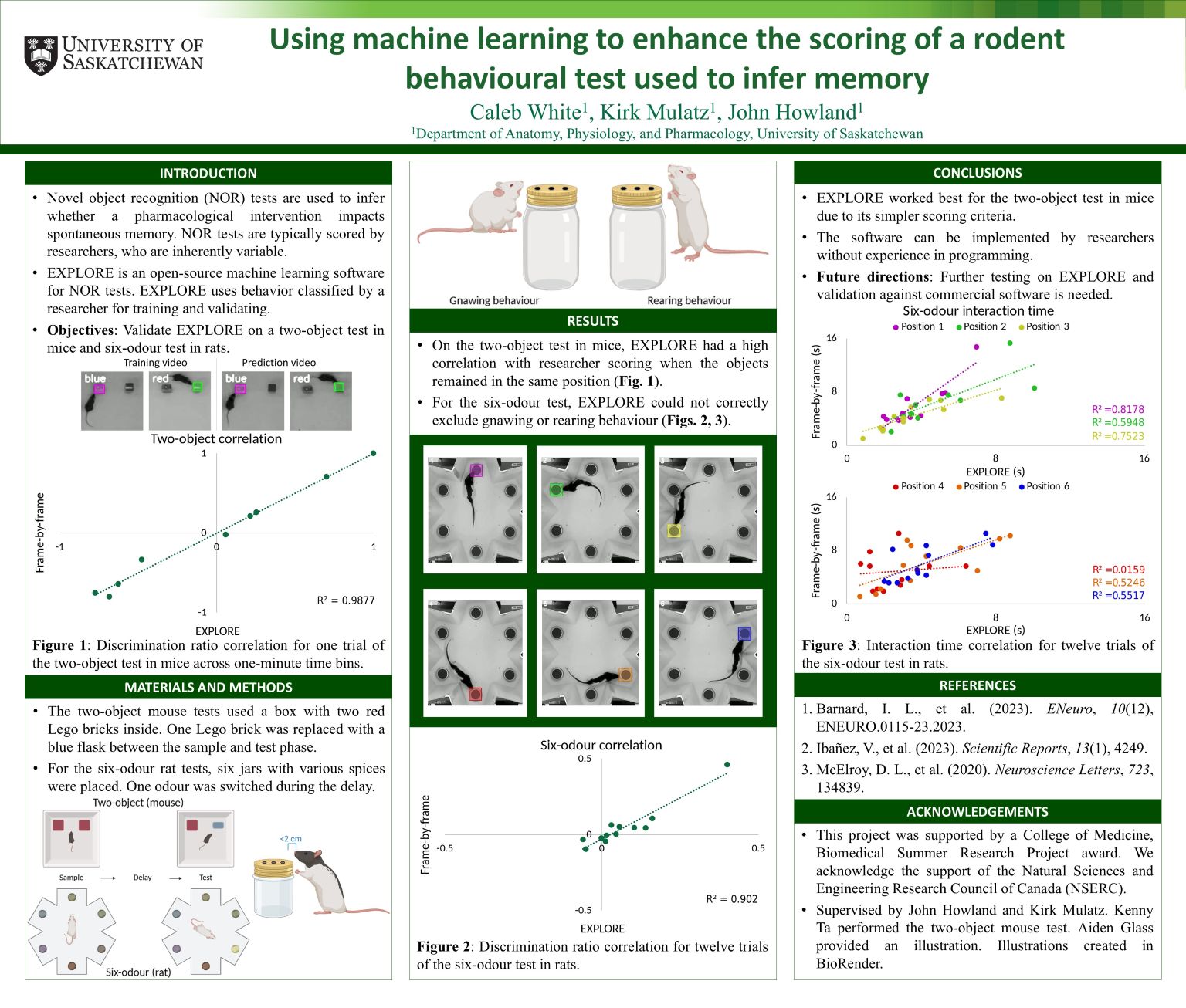
Using machine learning to enhance a rodent behavioural test for screening pharmacological effects on memory
Caleb White
Novel object recognition (NOR) tests are used to test behaviour and infer memory in rodent models of brain disorders. These tests are effective for assessing pharmacological interventions, for example, the potential memory impairments in the offspring of pregnant mice exposed to cannabis smoke. NOR tests are often scored from videos by researchers, who are inherently variable and subject to fatigue. To standardize scoring, open-source software to reliably measure the location of rodents in a testing chamber have been developed and applied to score NOR. To evaluate one example of such software, EXPLORE, I applied it to two-object mouse and six-odour rat NOR tests and compared the output against human scoring. EXPLORE performed best on the two-object mouse tests when the testing environment was unchanged between trials, showing that the software is sensitive to object placement. The six-odour rat tests added complexity to the scoring, as more non-explorative behaviours (gnawing, rearing, and freezing) were observed. Currently, EXPLORE could not correctly discern between explorative and non-explorative behaviours on our six-odour rat tests. In conclusion, this software can be used by researchers without programming experience for NOR tests. Further testing on EXPLORE and validation against existing commercial software is needed.
